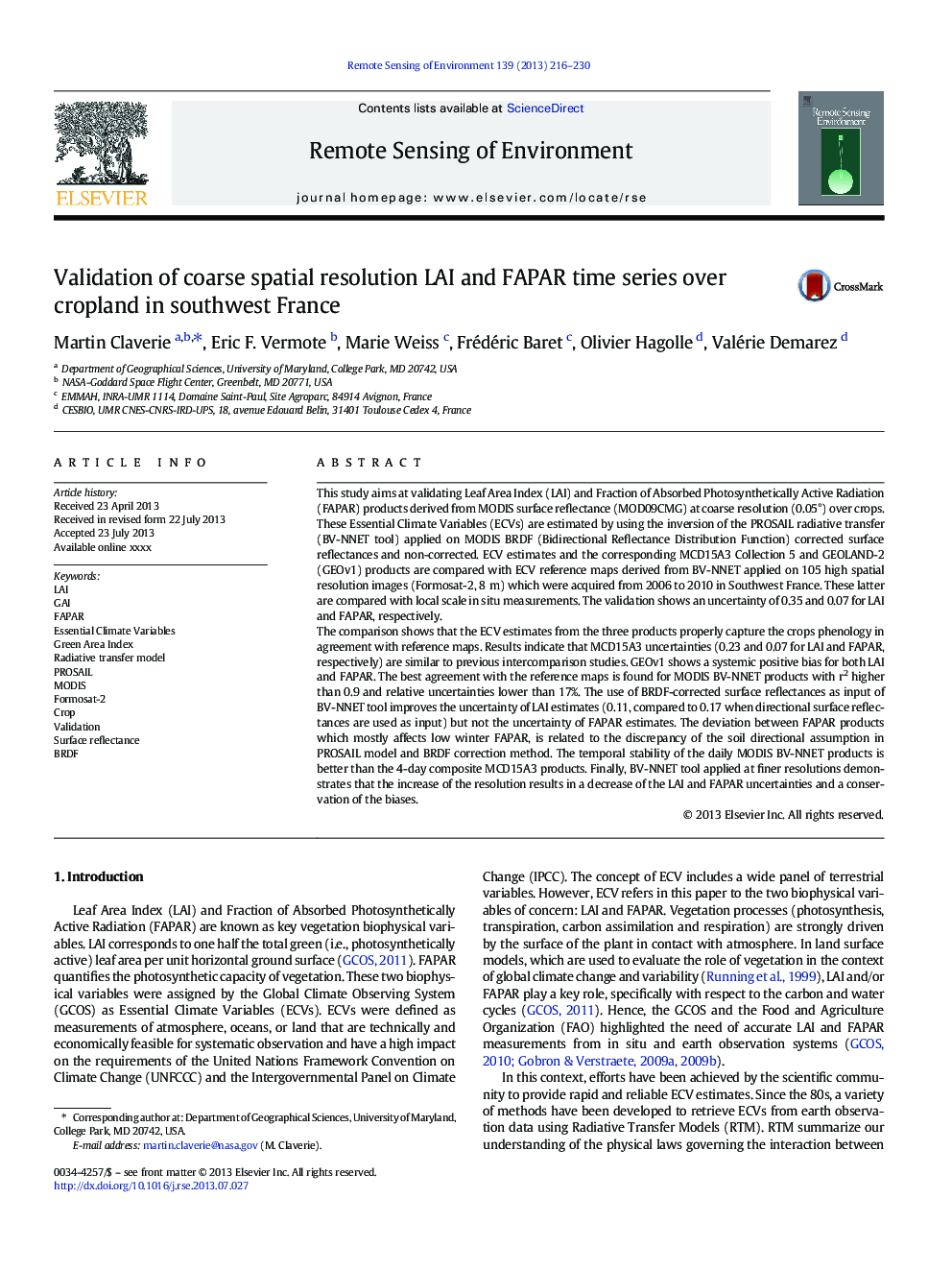| Article ID | Journal | Published Year | Pages | File Type |
|---|---|---|---|---|
| 6347139 | Remote Sensing of Environment | 2013 | 15 Pages |
Abstract
The comparison shows that the ECV estimates from the three products properly capture the crops phenology in agreement with reference maps. Results indicate that MCD15A3 uncertainties (0.23 and 0.07 for LAI and FAPAR, respectively) are similar to previous intercomparison studies. GEOv1 shows a systemic positive bias for both LAI and FAPAR. The best agreement with the reference maps is found for MODIS BV-NNET products with r2 higher than 0.9 and relative uncertainties lower than 17%. The use of BRDF-corrected surface reflectances as input of BV-NNET tool improves the uncertainty of LAI estimates (0.11, compared to 0.17 when directional surface reflectances are used as input) but not the uncertainty of FAPAR estimates. The deviation between FAPAR products which mostly affects low winter FAPAR, is related to the discrepancy of the soil directional assumption in PROSAIL model and BRDF correction method. The temporal stability of the daily MODIS BV-NNET products is better than the 4-day composite MCD15A3 products. Finally, BV-NNET tool applied at finer resolutions demonstrates that the increase of the resolution results in a decrease of the LAI and FAPAR uncertainties and a conservation of the biases.
Keywords
Related Topics
Physical Sciences and Engineering
Earth and Planetary Sciences
Computers in Earth Sciences
Authors
Martin Claverie, Eric F. Vermote, Marie Weiss, Frédéric Baret, Olivier Hagolle, Valérie Demarez,
